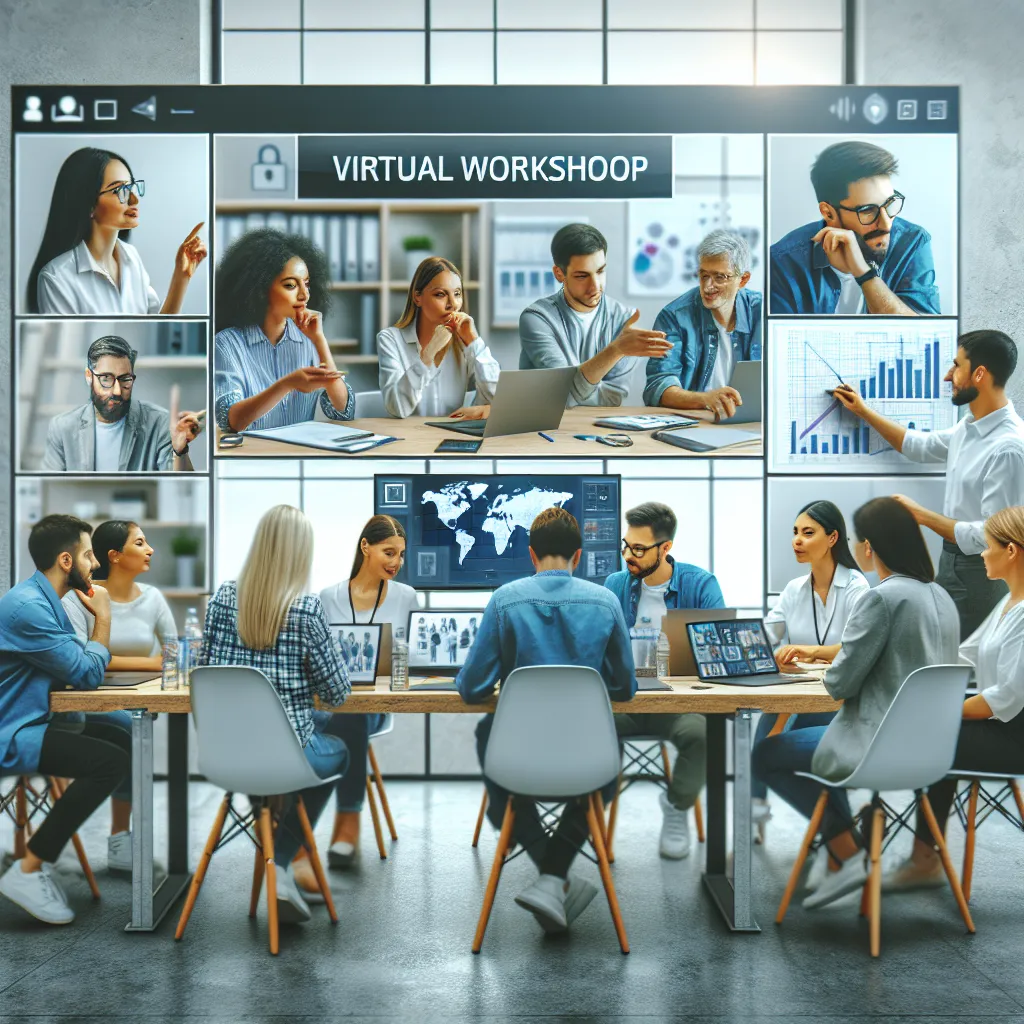Strategies for Boosting Engagement in Virtual Workshops
Maximizing engagement and learning outcomes in virtual workshops is a priority for many organizations seeking to deliver effective remote training and development. The shift to virtual workshops has necessitated the development of new strategies to boost engagement and ensure that participants are actively involved in the learning process.
One of the key strategies for boosting engagement in virtual workshops is to incorporate interactive elements throughout the session. This can include real-time polls, breakout group discussions, and interactive Q&A sessions. By encouraging active participation, facilitators can create a more dynamic and engaging learning environment.
Another effective approach is to leverage multimedia content to capture participants’ attention. Incorporating videos, infographics, and interactive presentations can help maintain interest and cater to different learning styles. Additionally, providing hands-on activities and simulations can enhance the learning experience and make the workshop more impactful.
Moreover, establishing clear goals and expectations for the workshop can help participants stay focused and engaged. By outlining the learning objectives and the relevance of the content, attendees are more likely to actively participate and remain attentive throughout the session.
Utilizing social learning platforms and collaborative tools can also facilitate engagement in virtual workshops. Encouraging participants to share ideas, collaborate on projects, and provide feedback can foster a sense of community and collective learning, enhancing overall engagement and knowledge retention.
In summary, boosting engagement in virtual workshops requires a thoughtful combination of interactive elements, multimedia content, clear communication, and collaborative opportunities. By implementing these strategies, organizations can maximize engagement and ultimately improve learning outcomes in their virtual workshops.
Enhancing Learning Outcomes in Online Training Sessions
Enhancing learning outcomes in online training sessions is crucial for maximizing engagement and ensuring that participants derive the maximum benefit from virtual workshops. To achieve this, it is important to incorporate interactive elements such as polls, quizzes, and group discussions. These activities not only keep participants actively involved but also provide opportunities for immediate feedback and reinforcement of key concepts.
Another effective strategy for enhancing learning outcomes is the use of multimedia resources. Integrating videos, simulations, and infographics can help cater to different learning styles and reinforce the material being presented. Moreover, providing supplemental resources such as e-books, research articles, or case studies can further solidify the learning experience and encourage participants to explore the topic in greater depth.
Furthermore, the role of the facilitator in guiding online discussions and activities cannot be overstated. A skilled facilitator can foster a collaborative and inclusive environment where participants feel comfortable sharing their thoughts and engaging in meaningful dialogue. This human element is essential for creating a sense of connection and community within the virtual workshop, ultimately leading to enhanced learning outcomes.
In conclusion, enhancing learning outcomes in online training sessions requires a multi-faceted approach that integrates interactive elements, multimedia resources, and skilled facilitation. By prioritizing these aspects, virtual workshops can maximize engagement and provide participants with a rich and effective learning experience.
Creating Interactive Virtual Workshop Environments
Creating interactive virtual workshop environments is essential for maximizing engagement and learning outcomes in the online setting. Incorporating interactive elements such as polls, quizzes, and breakout discussion groups can significantly enhance participant involvement and knowledge retention. By utilizing virtual whiteboards and collaborative documents, facilitators can encourage active participation and co-creation of content among workshop attendees.
Furthermore, leveraging interactive tools like live chat and Q&A sessions fosters real-time engagement and enables participants to seek clarification or share insights. Additionally, integrating gamification elements into virtual workshops, such as point systems and team challenges, can make the learning experience more enjoyable and motivating.
In conclusion, the strategic use of interactive virtual environments in workshops is pivotal for sustaining participant engagement and achieving favorable learning outcomes in the digital realm.
Maximizing Participation in Remote Learning Environments
Maximizing participation in remote learning environments is a critical aspect of maximizing engagement and learning outcomes in virtual workshops. In the increasingly digital world of education and professional development, creating opportunities for active involvement and interaction is essential for ensuring the success of remote learning experiences.
One effective strategy for maximizing participation in virtual workshops is to leverage interactive technologies and collaborative platforms. By utilizing features such as breakout rooms, polling tools, and collaborative documents, facilitators can encourage active engagement and create a dynamic learning environment. These tools not only allow participants to interact with the content but also with each other, fostering a sense of community and shared learning.
Furthermore, incorporating multimedia elements such as videos, interactive presentations, and simulations can help to capture and maintain participants’ interest. Visual and interactive content can enhance the learning experience, making the workshops more engaging and effective.
Another key consideration for maximizing participation in remote learning environments is the design of inclusive and accessible content. Providing varied formats for content delivery, such as text, audio, and video, ensures that participants with diverse learning preferences can fully engage with the material. Additionally, offering multiple channels for communication, such as chat, audio, and video conferencing, enables participants to choose the mode of engagement that best suits their comfort and capabilities.
Encouraging active participation through regular interactive exercises, discussions, and Q&A sessions also plays a crucial role in maximizing engagement and learning outcomes. Creating a safe and open environment where participants feel comfortable sharing their thoughts and asking questions is essential for fostering active participation and meaningful learning.
In conclusion, maximizing participation in remote learning environments is a multifaceted effort that involves leveraging technology, creating inclusive content, and fostering active engagement. By implementing these strategies, virtual workshops can achieve higher levels of participation, leading to enhanced learning outcomes and a more enriching educational experience for all participants.





